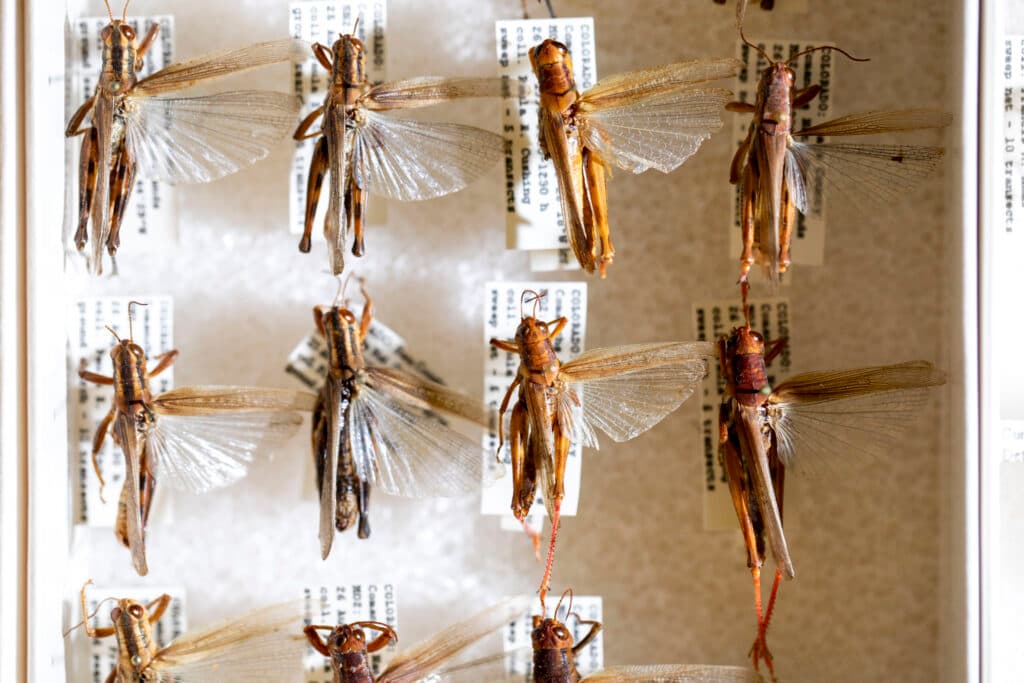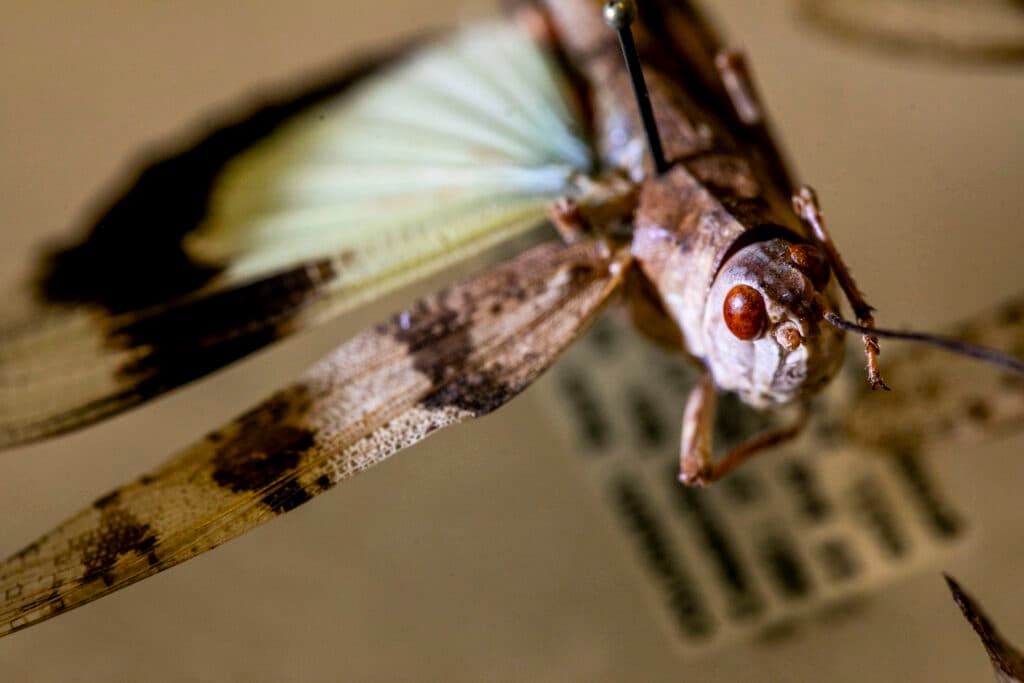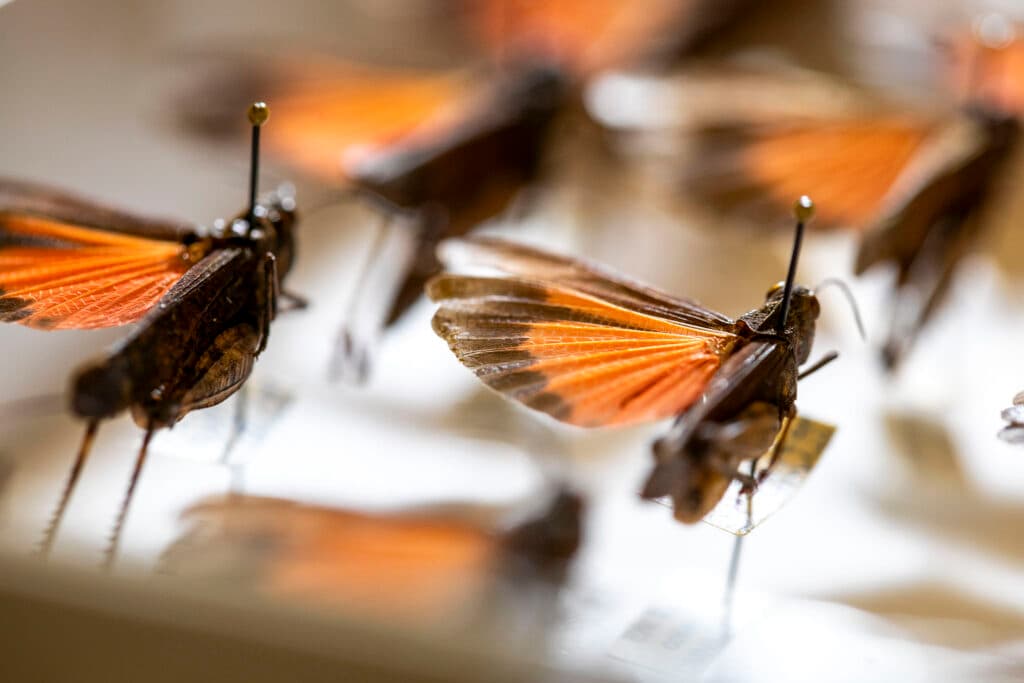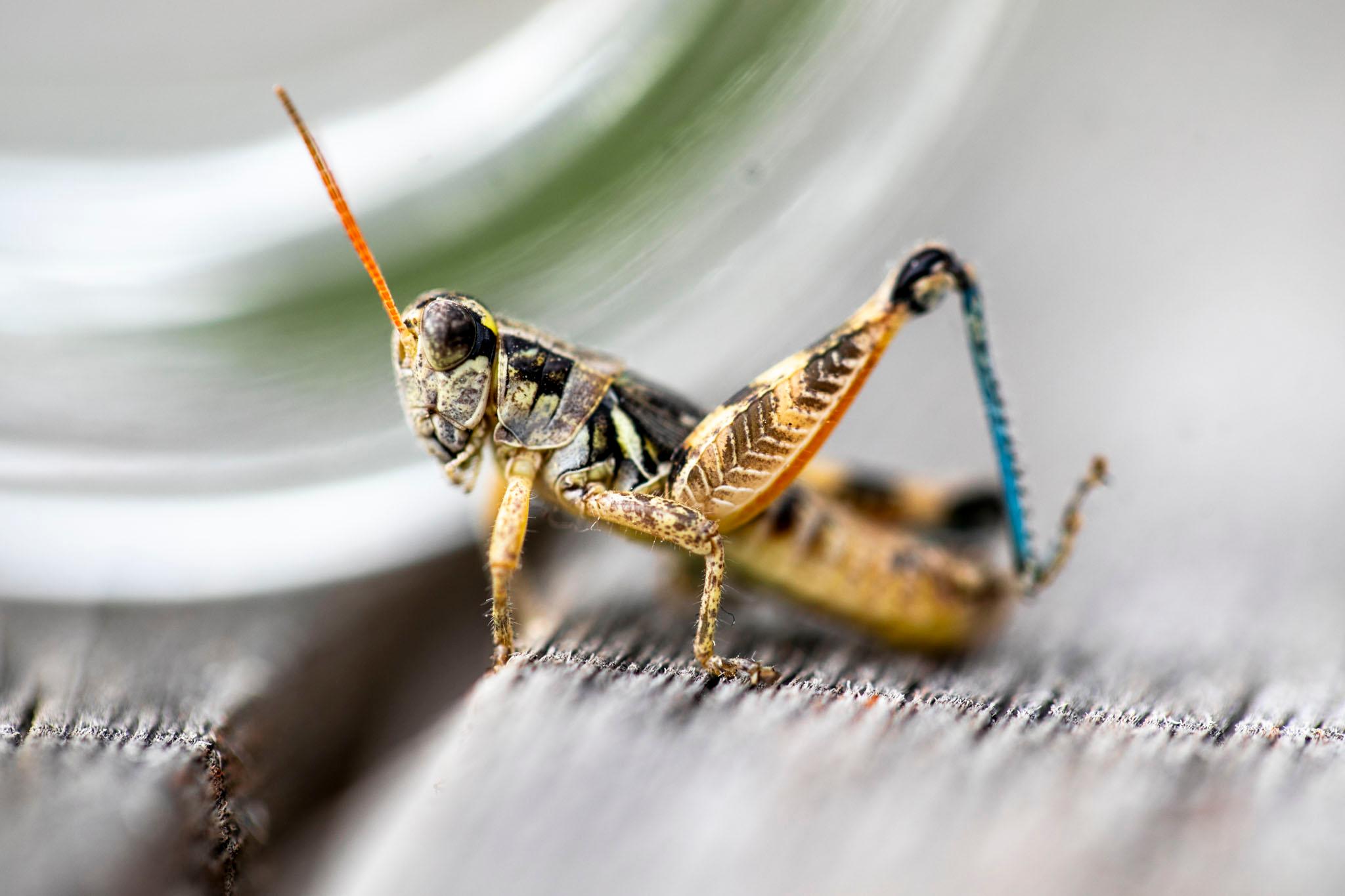You may think your lawn is alive, as it jitters and lurches with every step you take in the grass.
But look closer: It's a sea of grasshoppers — and this summer's heat is probably helping them thrive.
That's the short answer to reader Christi Kazakov's question: "Why are there so many grasshoppers this year?"
We visited our favorite insect expert, Denver Museum of Nature and Science entomology curator Frank Krell, to find out more.
Grasshoppers' competition just can't take the heat
Nobody's really counting grasshopper populations, Krell told us.
But he always knows something's up when he sees reports of farmers complaining in the press. And they have been complaining.
"There are more this year, for sure," he said, confidently.

Some bugs do something called "estivating," the opposite of hibernation. They burrow underground to wait out the summer's hottest months.
But scorchers don't really get to grasshoppers, Krell told us. That means they do really well when temperatures hit a certain threshold and everyone else goes down under for the season.
"They can cope with drier conditions. Other insect groups cannot. So they take over when other insect groups just go into the soil and try to survive the summer in a more cooler environment," he told us. "They come out and eat like crazy when it's hot."
It means grasshoppers could be a winner in a warming world, at least for a while.

"Well, if it's too hot, of course then they die again. So if global warming heats up another 20 degrees, then they probably will have problems," he said. (So will we all.)
This year's infestation, Krell added, may be the result of two years of correct climate conditions.
- Want more bug stories? Check out Frank's takes on miller moths and dung beetles!
While the heat this year probably is helping them live, last year's more temperate weather probably helped them get born. Most grasshoppers lay eggs in soil. The eggs then lie dormant through the winter until they're ready to hatch.
It's one reason why predicting grasshopper populations is nigh impossible, he said. Everything needs to happen in just the right way for a proper bug boom.
Unfortunately, there are too many kinds of grasshoppers for one perfect solution.
The big issue, Krell said, is there are just so many grasshopper species in Colorado.
"We have over a hundred species in Colorado," he told us.
Their numbers are so diverse that Krell could only give me the genus of one I captured and photographed in my backyard. It was a Melanoplus, a spur-throated grasshopper; getting to the species usually requires dissection.

That abundance of species means silver-bullet solutions are hard to come by.
"You can try a garlic spray, or a hot pepper spray, on your plants. And lots of grasshoppers probably are deterred, or just go away because they hate it — and others don't. So you can be lucky or not with these," Krell said. "You might discover something about the species in your backyard."
The same goes for pesticides, he said. You'd need something that will kill every grasshopper species, which means the carnage would not stop with these annoying jumpers.
"When you use insecticide, you kill all the insects," he said, adding that poisoned insects could also impact birds and other predators in the area. "I would not use poisons, but that's a personal thing. I have three kids and I would like to live healthy as long as possible."

But what about my garden?
To dig in a little more, we visited Colorado Master Gardener Kevin Ritter at his post at the Denver Botanic Gardens.
He and his colleagues are usually ready and waiting to answer questions about plants, yards and soil.
The topical solutions — pepper spray and the like — are kind of old wives' tales, he said. Good for you if that works, but he doesn't usually offer solutions that aren't backed by research.

"We try to answer everything from the science-based background and try to get the bigger picture to better educate folks," he said.
Row covers might be a more likely suggestion, he said, even if all that fabric messes with your garden's visual aesthetic.
The Colorado Master Gardeners' official info sheet on grasshoppers suggests using pesticides near breeding sites. If you don't want to use chemicals, you might try leaving grass uncut, especially near eggs, to keep them occupied and away from plants you care about.
Ritter said Master Gardeners like him inform people about the pros and cons of every approach, then let them make their own decisions.
You might just let them hop in peace — or hire some help.
"Live with it," is a piece of advice that Ritter says he gives out all the time, particularly when people ask him about conquering very resilient bindweed.
Our expectations of what we think we should be able to control aren't always realistic. He's kept that in mind as he deals with grasshoppers in his own garden.
"Luckily, I've had just kind of the normal amount, and I just live with them. They do damage. I'm just like, 'Okay, that's your thing,'" he told us. "We can share."
Or you could try employing some predators, though that's also not something Ritter usually offers people.

"There's been some talk around Japanese beetles, that ducks tend to favor them and things like that. We haven't necessarily recommended that as a primary solution, just it's not as practical," he said.
But Krell said there's historical precedent to guide you, should you try to complete your war on grasshoppers.
"Hire a flock of turkeys," he told us during our day at the museum. "I dunno, that's what they did actually in the 1930s. 1937, we had a plague here of grasshoppers in Colorado. They sent out just flocks of turkeys, lots of turkeys, and they ate them like crazy."
Turkeys, back then, were all the rage.
You can pose questions to Colorado Master Gardeners at the Denver Botanic Gardens' Helen Fowler Library on Tuesdays, Thursdays and Saturdays through October. You don't need to pay for admission.











